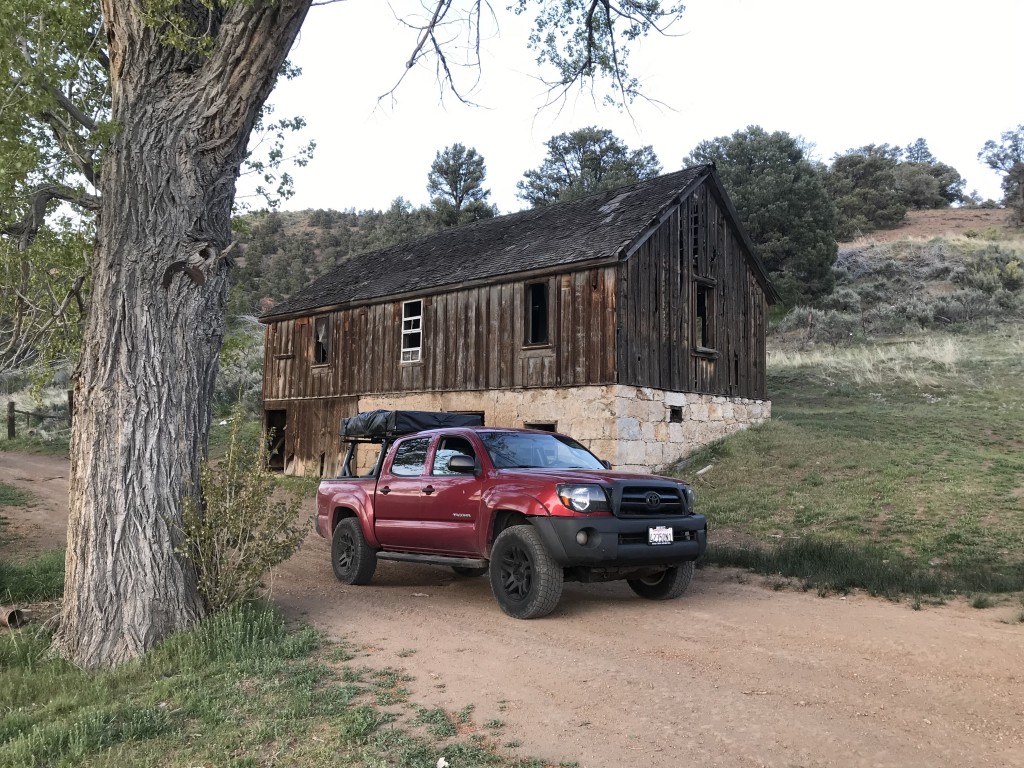For this review, we did what anyone testing a tent should do: a ton of camping. We spent cold nights in frozen high-altitude meadows, hot nights in mosquito-infested western slope foothills, and made a few 4x4 missions to explore the hot springs of the Eastern Sierras. We also tested all over the wilderness of Utah. Below, we explain our testing process.
Space and Comfort
To get an accurate number for the space of each tent, we broke out the tape measure to measure the floor sizes and maximum inside height. Comfort is much more subjective, so our testing team spent several nights in each tent and came up with a consensus. We noted whether our knees could feel the floor through the mattress during setup, how thick the mattresses are, and the area that the mattress takes up inside the tent compared to the total area of the floor.
Durability
The first thing we did to determine differences in durability was to look at the materials of the tents. In general, a tent with a higher-rated canopy scored higher than those made to be lighter. To get a true hands-on reading of how durable these tents are, we converted each model from travel mode to camping mode and back 25 times. We also opened and closed each zipper 25 times and took the rain fly off and put it back on 25 times. We took notes and photos of any signs of wear and tear or complete product failure. We looked at the stitching, the floor, the ladder, velcro, clips, and hinges.
Ease of Conversion
To measure ease of conversion, we timed each conversion from travel mode to camping mode and back 25 times. We also made a judgment as to the overall difficulty of the conversion process. The ease of use of the ladder was noted along with other smaller details like the action of the zippers and the struggle to install the poles. We looked for ways the manufacturer had made the conversion process less painful and frustrating, such as using internal bungees to help the canopy collapse while folding the tent up.
Ease of Assembly and Installation
To gauge how hard the assembly of each tent was, we timed the assembly process but also noted many different elements that made it either harder or easier. The way the tents were packaged and the quality of instructions was noted and photographed. The tools that came with the tent were recorded as well. Unless otherwise noted, we used only the tools that came included with the kits to get a true side-by-side comparison.
Once assembled and ready, we timed the installation process to get some numbers to compare, but we also noted which tent mounting systems were the easiest to use with the tools they came with. A tent with a tool-free mounting system will be the easiest to install and remove. Tents that came with ratcheting wrenches also outscored tents that came with a traditional wrench. We also noted whether the mounting system allows you to set your tent up out the back of your vehicle instead of out the side. Some models come with mounting systems that allow for either way; others require modification if you want to go "out the back." We custom fit the track system on one tent to see how difficult it was.
Cover Convenience
For the cover convenience metric, we compared conversion times. Although all of the covers are fairly similar in their difficulty to remove, putting them back on was a different story. Some have velcro that can stick before you want it to, and others have clips and zippers that can make life much easier when it comes time to go home. Some tents have straps to keep the cover rolled up when not in use, others don't. One tent that we tested had a cover system where the cover comes off on all four sides rather than hanging from one side. Our process of converting each tent from travel to camping mode and back 25 times made it so that we noticed even the smallest subtleties.







